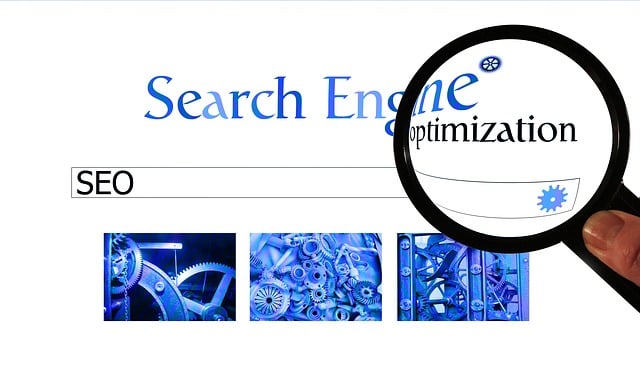AI-powered chatbots are revolutionizing e-commerce by enhancing customer interactions through personalized product recommendations and post-purchase support, using advanced AI search capabilities. Integrating LLMs with NLP and ML technologies ensures contextually relevant responses and natural conversations, driving sales and freeing human agents for complex issues. Effective chatbot design focuses on human-like interactions, while seamless integrations with e-commerce platforms and CRM tools increase conversion rates. Rigorous testing and continuous training using diverse data improve response accuracy, query resolution time, and user satisfaction, ultimately optimizing the e-commerce experience through AI search for ecommerce.
In today’s digital landscape, an AI-powered chatbot can transform your ecommerce experience. This guide delves into the process of building an effective ecommerce chatbot, focusing on understanding specific needs and goals, selecting the right AI technology, designing seamless conversational flows, and integrating various platforms.
Learn how to optimize your chatbot through rigorous testing and continuous training to enhance customer engagement and drive sales with AI search for ecommerce solutions.
- Understanding Ecommerce Chatbot Needs and Goals
- Choosing the Right AI Technology for Your Bot
- Designing Conversational Flows and Integrations
- Testing, Training, and Optimizing Your Ecommerce Chatbot
Understanding Ecommerce Chatbot Needs and Goals

In today’s digital era, AI-powered chatbots have become a game-changer in the world of ecommerce, revolutionizing how businesses interact with their customers. When building a chatbot for this sector, understanding specific needs and setting clear goals is crucial. Ecommerce platforms often require bots to handle a wide range of tasks, from product recommendations and order tracking to customer service inquiries and even post-purchase support.
The primary goal should be enhancing the shopping experience through personalized interactions. AI search capabilities allow chatbots to understand customer preferences and provide tailored suggestions, which can significantly boost sales. Additionally, efficient customer service automation ensures quick responses to common queries, leaving human agents free to handle more complex issues. This strategic approach leverages the power of AI to create a seamless, satisfying ecommerce journey for customers.
Choosing the Right AI Technology for Your Bot

When building a chatbot for e-commerce, selecting the appropriate AI technology is a pivotal decision. The right choice should align with your business goals and customer needs. E-commerce AI search capabilities have evolved significantly, offering various options like Natural Language Processing (NLP) and Machine Learning (ML). NLP enables chatbots to understand user queries, while ML ensures they learn from interactions, enhancing accuracy over time.
Considered a game-changer in the industry, advanced AI models such as Large Language Models (LLMs) provide contextually relevant responses, fostering more natural conversations. These technologies power intuitive chatbots that can assist customers with product searches, offer recommendations, and even handle simple returns or exchanges, ultimately enhancing the user experience and driving sales.
Designing Conversational Flows and Integrations

Designing Conversational Flows is a critical aspect of building an effective chatbot for e-commerce. The key is to create natural, human-like conversations that cater to customers’ needs and guide them through the purchasing process seamlessly. Start by mapping out potential customer queries and designing responses that provide relevant product information, address concerns, or assist in navigating the site. Incorporate AI search capabilities to enable the chatbot to offer accurate, up-to-date product details.
Integrations are another vital component. Your chatbot should integrate smoothly with your e-commerce platform, inventory management systems, and customer relationship management (CRM) tools. This ensures that the chatbot can access real-time data, such as product availability, pricing, and customer preferences, enhancing its ability to provide personalized interactions and recommendations. By streamlining these integrations, you create a seamless shopping experience for your customers, increasing their likelihood of conversion.
Testing, Training, and Optimizing Your Ecommerce Chatbot

After developing your ecommerce chatbot, thorough testing is crucial. Utilize AI search capabilities to simulate customer queries and gauge the chatbot’s performance. Start with basic questions and gradually introduce complex scenarios, including edge cases that may arise in real-life interactions. Monitor response accuracy, time taken to resolve queries, and overall user satisfaction. This process helps identify any shortcomings or areas for improvement before deploying the chatbot live.
Training plays a vital role in enhancing your chatbot’s capabilities. Continuously feed it with relevant customer data, product information, and industry trends using AI search tools. The more diverse and up-to-date the training data, the better equipped the chatbot will be to handle a wide array of customer inquiries. Regularly evaluate its performance based on defined key performance indicators (KPIs) and make adjustments as needed. Optimizing your chatbot’s responses, understanding level, and contextual awareness ensures it delivers accurate, relevant, and engaging interactions, ultimately improving the overall ecommerce experience for your customers.
Building an effective chatbot for your ecommerce platform involves understanding customer needs, selecting the right AI technology, designing intuitive conversations, and continuous optimization. By integrating a well-trained chatbot, you can enhance customer service, provide personalized product recommendations, and drive sales through seamless ai-driven search experiences. Remember, a successful ecommerce chatbot is not just a tool but an engaging assistant that can significantly improve your online store’s performance and customer satisfaction.
